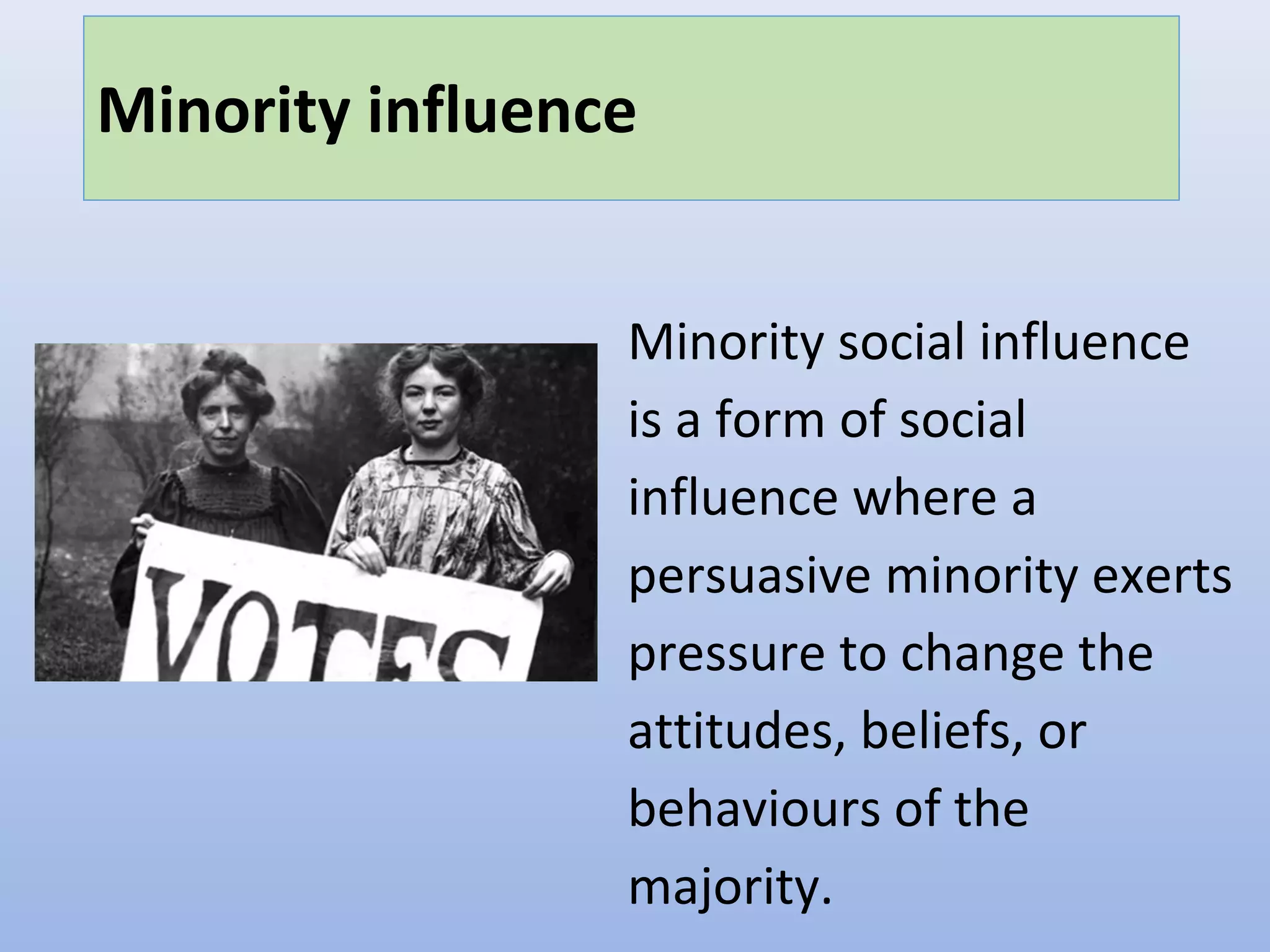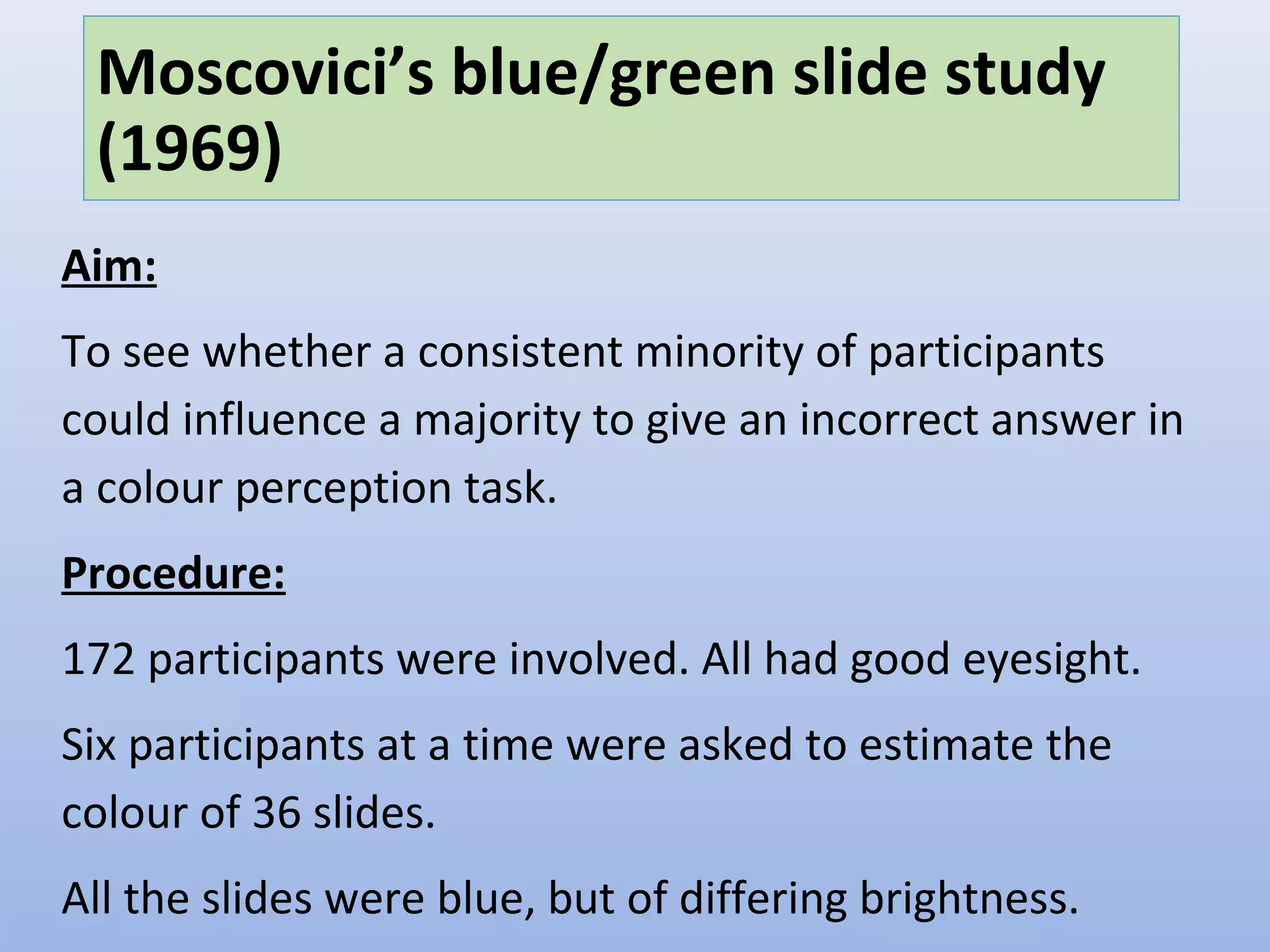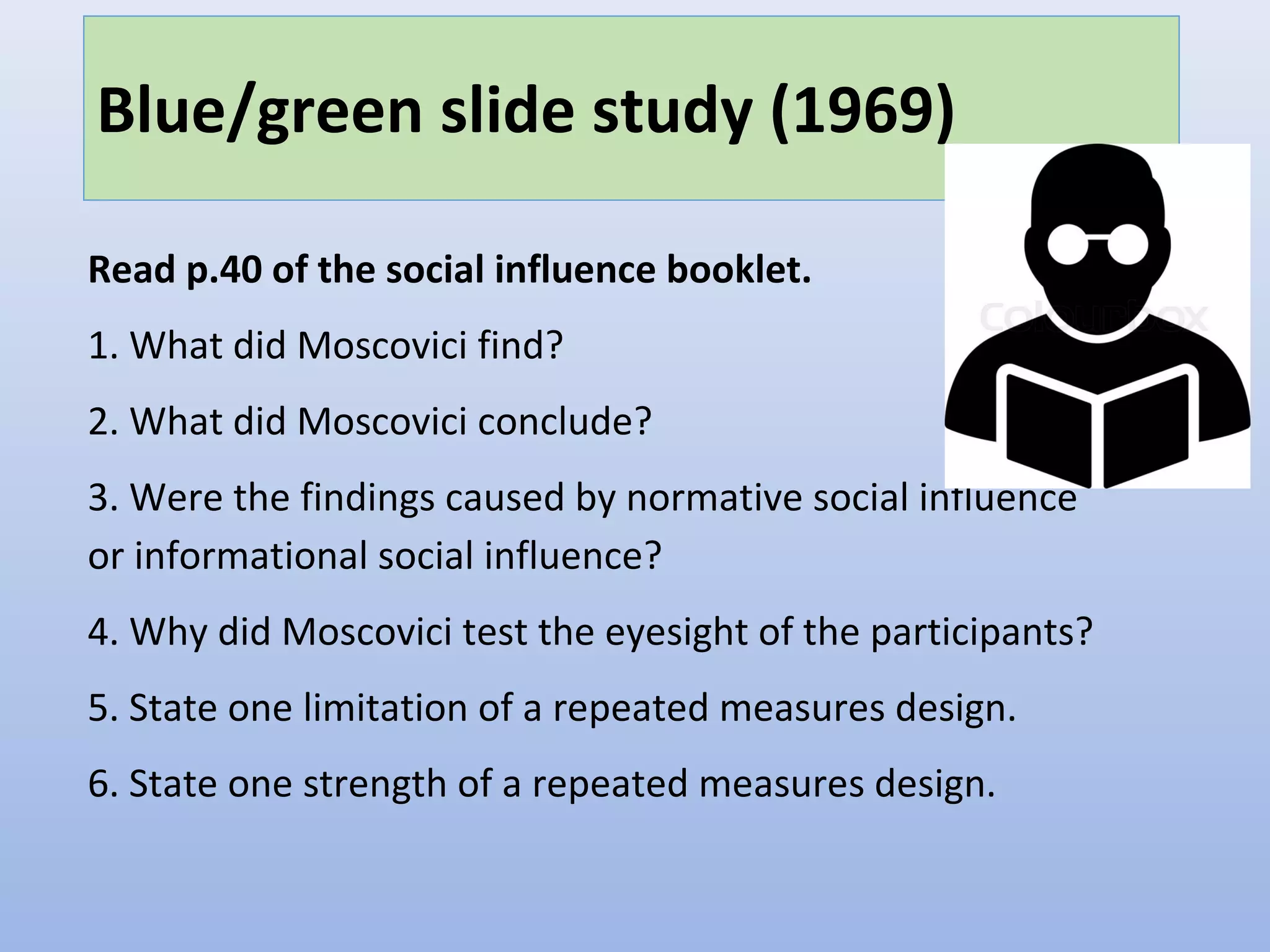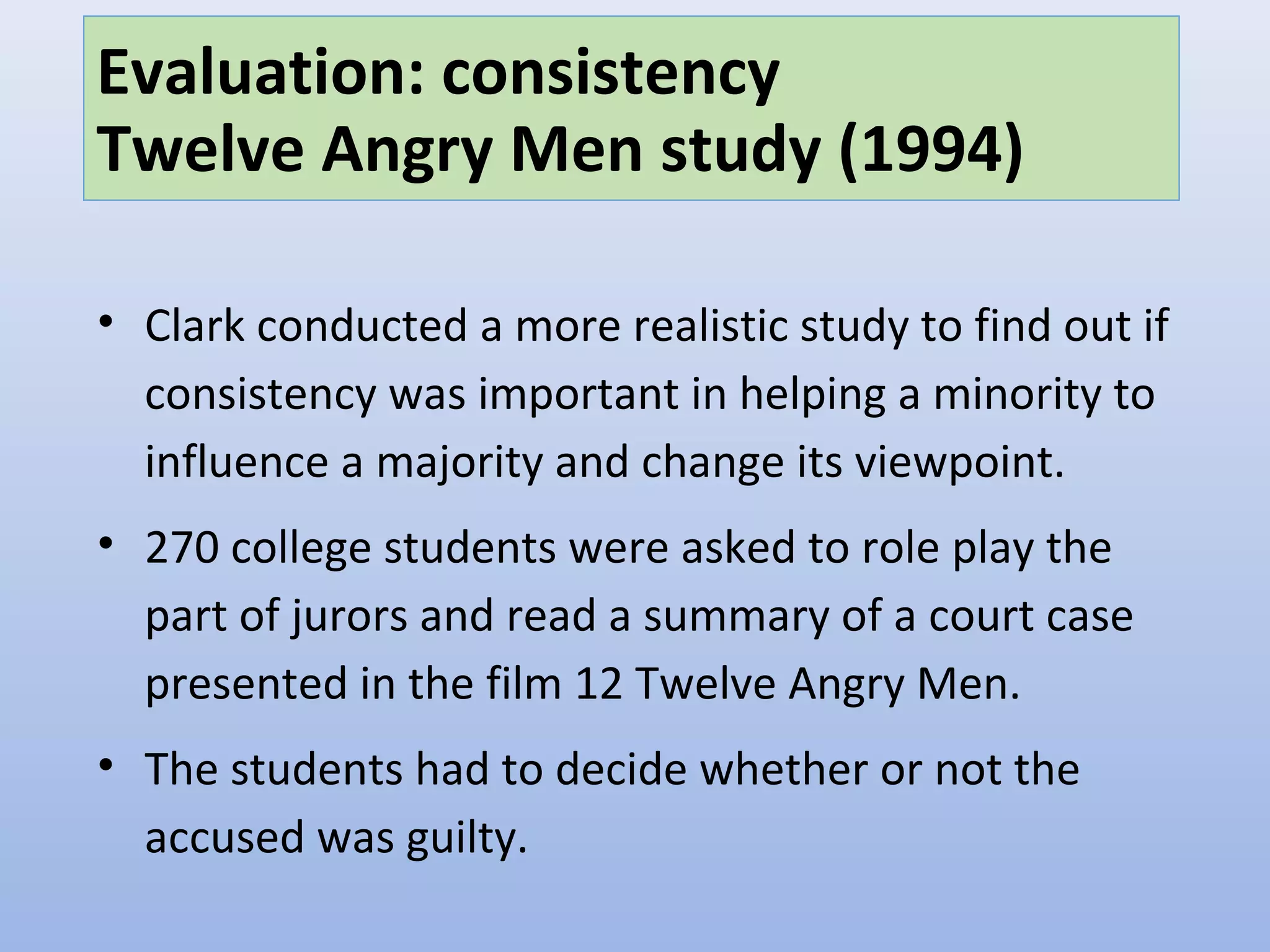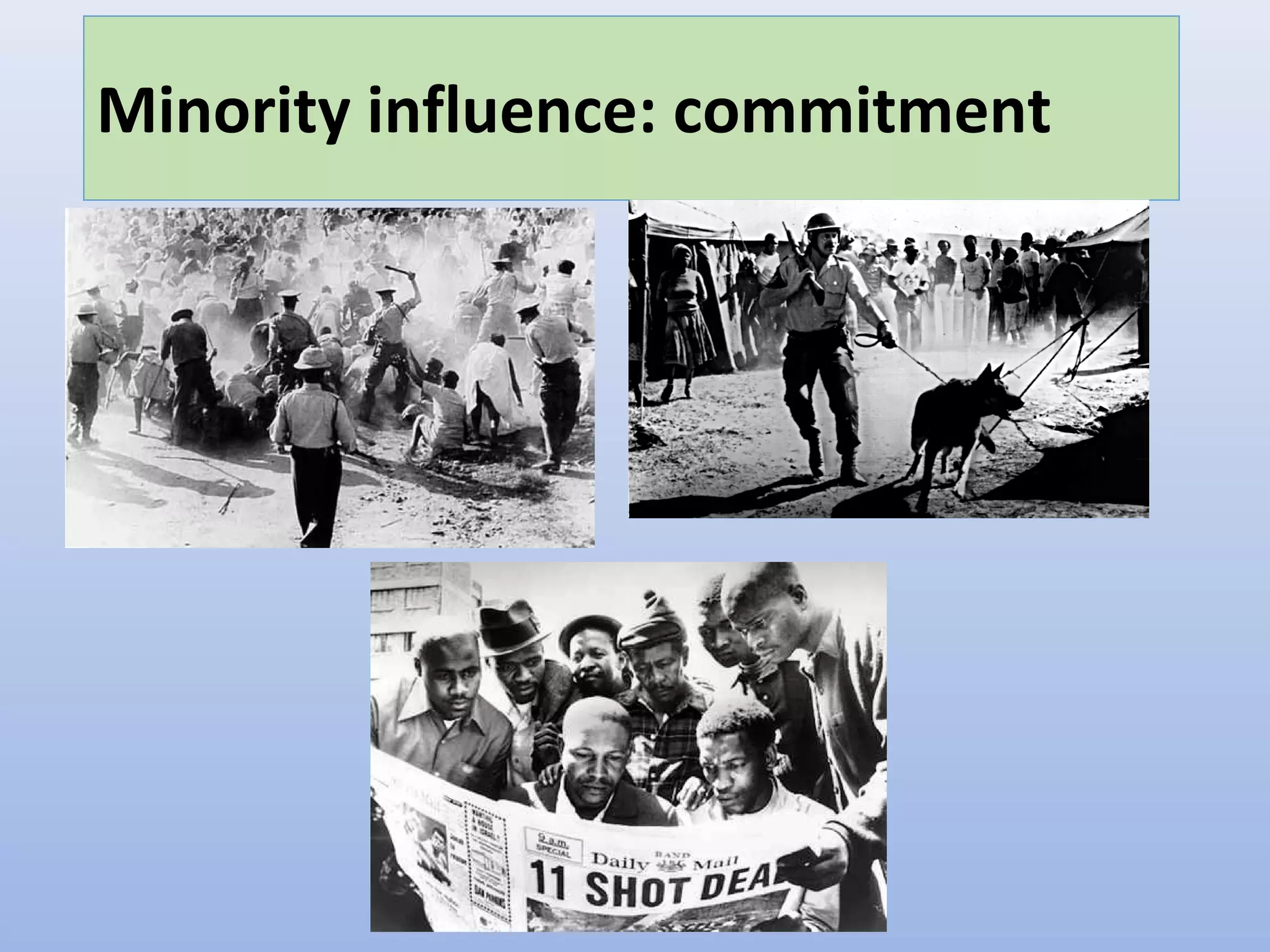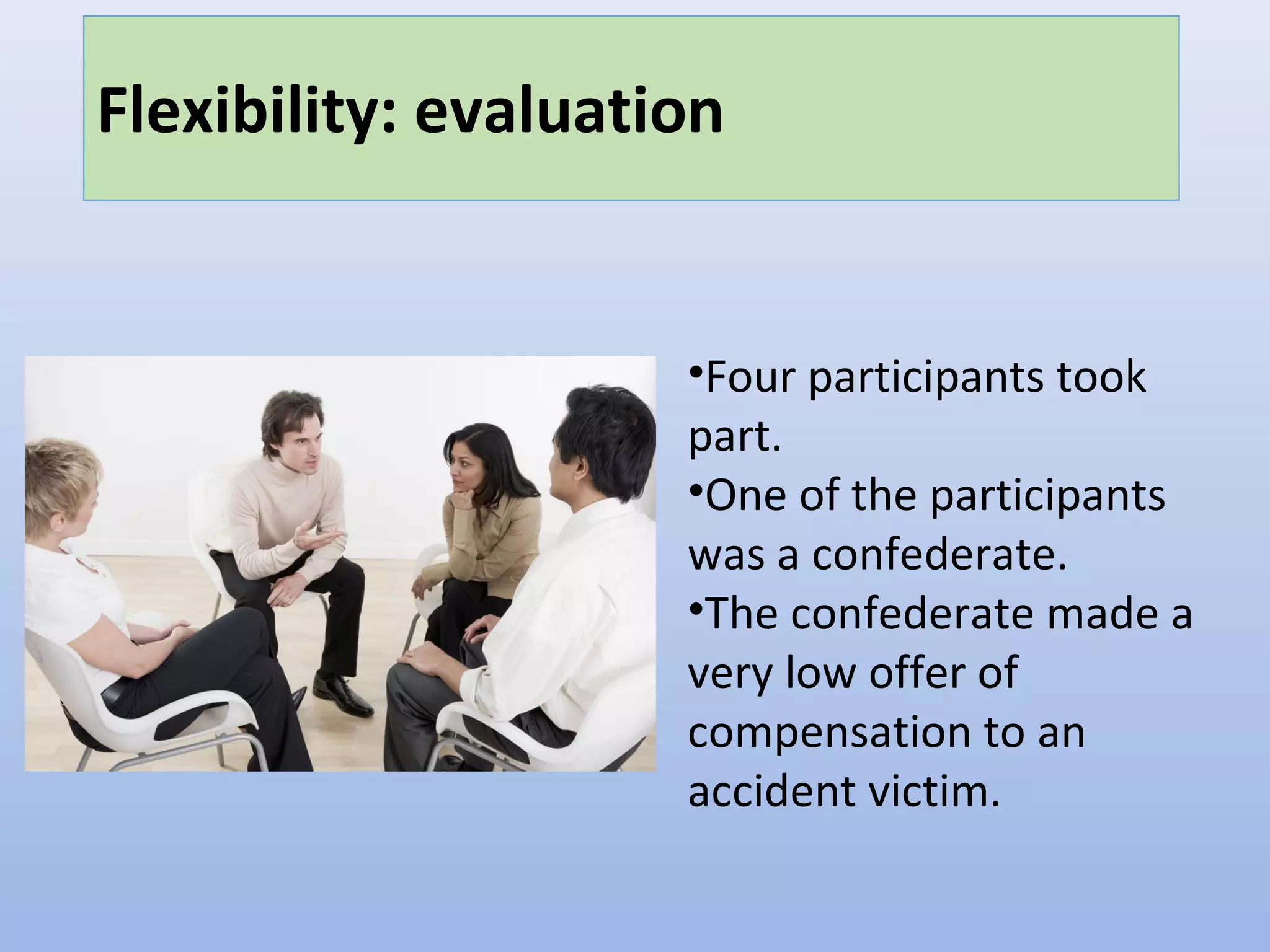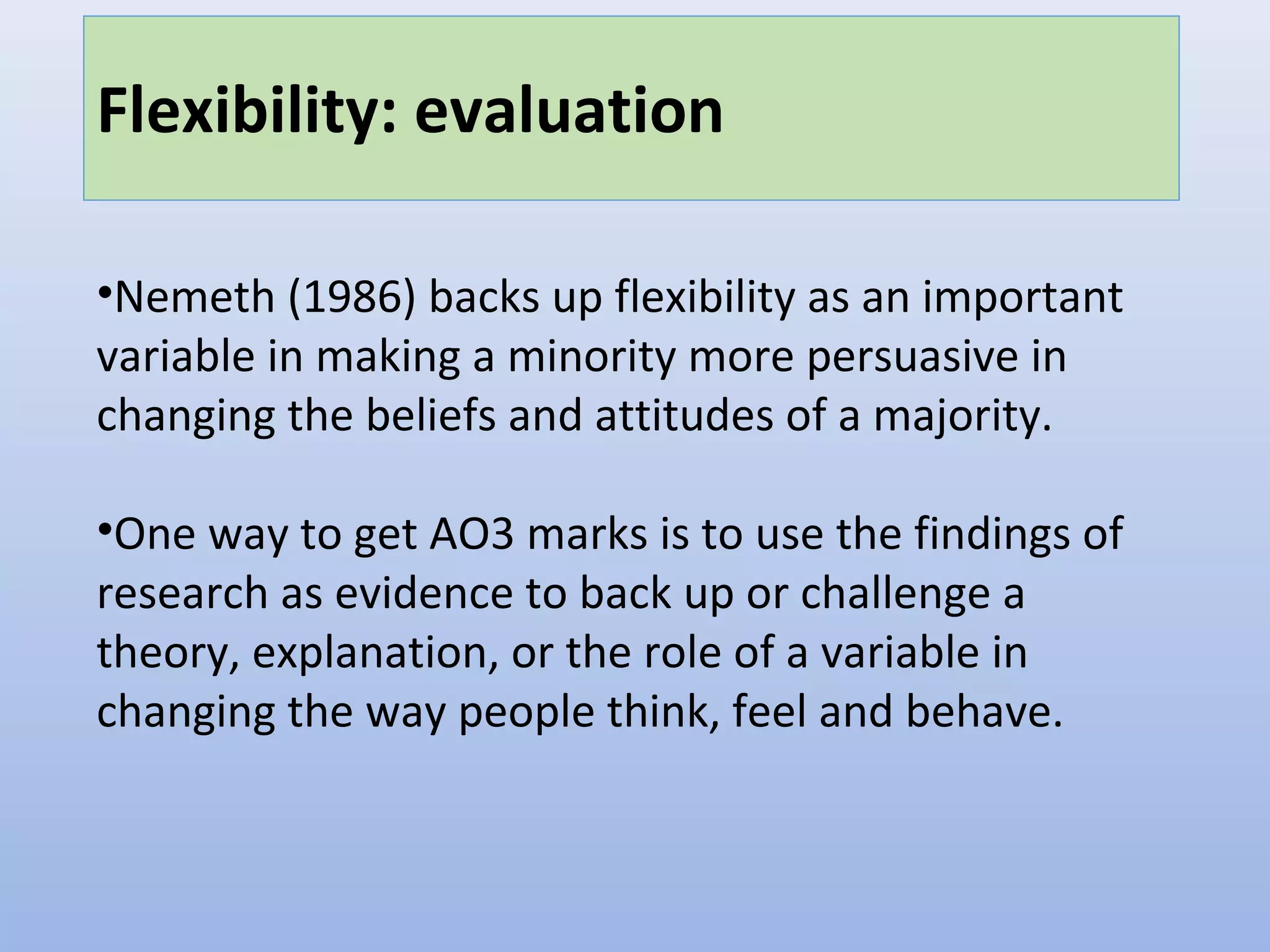1. The document discusses minority influence and the role of consistency, commitment, and flexibility according to research by Moscovici and others.
2. Moscovici found in his blue/green slide study that a consistent minority were able to influence the majority to give incorrect answers. Later research by Clark also showed consistency was important for minority influence.
3. Commitment, where the minority appear principled and have made sacrifices for their views, also amplifies minority influence according to Hogg and Vaughan.
4. Flexibility in adapting arguments, as shown by Nemeth's jury study, allows the minority to be more persuasive through small concessions rather than rigid consistency alone.




